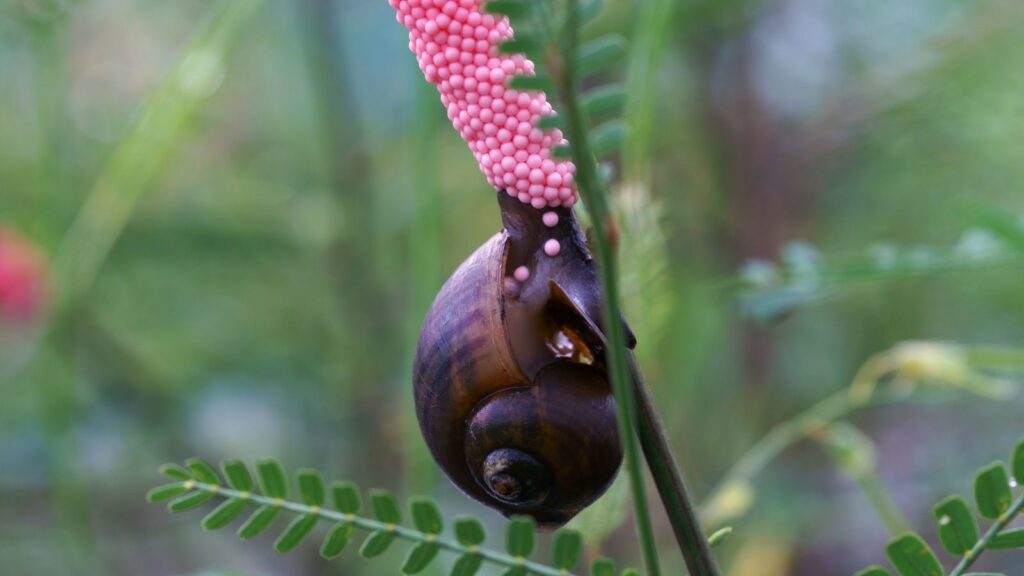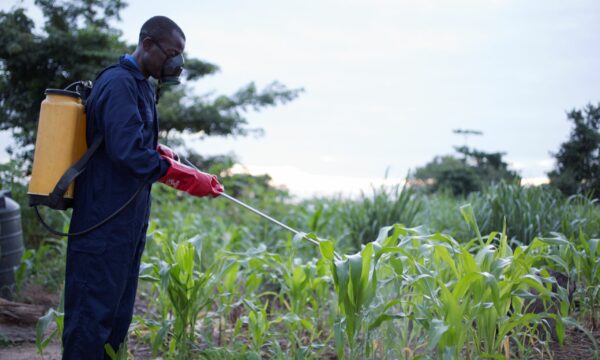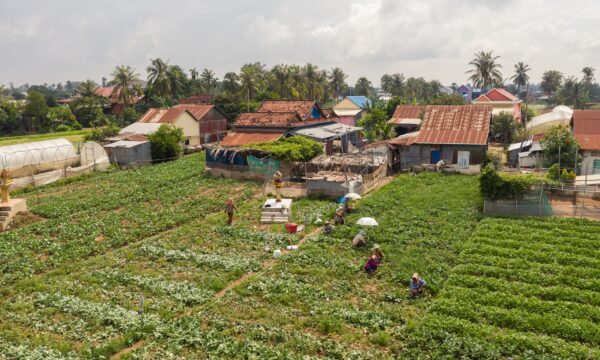
Invasive species, like apple snail, are a threat to food security. It’s important that they’re quickly managed before they start to spread. One of the best ways to do this is to share plant health knowledge with smallholder farmers. And writeshops are an excellent tool for gathering evidence-based information to do this. In this blog, we look at how a recent writeshop in Kenya has helped to curate knowledge to identify and manage invasive apple snail impacting Kenya’s rice production.
What’s apple snail, and why is it such a threat to Kenya’s food security?
In 2020, CABI confirmed the discovery of invasive apple snail (Pomacea canaliculata) in rice fields in the Mwea Irrigation Scheme in Kirinyaga County, Kenya. The snail is native to South America. However, over the last 40 years, this freshwater mollusc has spread across North America and Asia, and has now had its first report in continental Africa. The Kenya Plant Health Inspectorate Service (KEPHIS) and the Ministry of Agriculture have taken immediate action. This is critical as the IUCN/GISD lists the invasive apple snail among its 100 most damaging invasive species globally.
The snail usually lives in waterways, like rice paddies, where it feeds on young rice seedlings. One adult snail can destroy one square metre of rice in a single night. And females can lay up to 3,000 eggs overnight. Moreover, the hatched snails have a 90% survival rate and can live for up to four years. As a result, they are highly damaging to rice paddies.
Taking action on invasive apple snail
In recent years, CABI has been working with Kenya’s authorities to control the spread of the snail through the PlantwisePlus programme. CABI has also researched the potential impact of the snail on rice production in Kenya. In July 2023, the journal of Pest Management Science published a CABI-led study on the snail. The paper laid out how an invasion of apple snail could be “disastrous” for rice production and food security in Kenya. The pest could spread and affect other rice-growing regions across Africa.
Today, extension agents report that apple snail is now one of Kenyan rice farmers’ top five concerns. Agro-dealers report that 70% of complaints they hear are due to apple snails. Household surveys and focus group discussions with smallholder farmers reveal the scale of the devastation. The snail has reduced rice yields by up to 14%. However, it has reduced net income from rice by up to 60% in addition to increasing the production costs.
Using writeshops to help limit to threat of the apple snail
Against this background, Kenya’s Ministry of Agriculture and Livestock Development (MoALD) took further action. Through its Plant Protection and Food Safety Directorate (PP&FSD), it organized a writeshop. In this context, a writeshop is a collaborative writing workshop. Experts drawn from different institutions and disciplines come together to write content capturing best practices for managing an invasive pest. Multiple authors or contributors work on the same piece of content. In this case, the writeshop aimed to create technical resources to manage the spread of invasive apple snail.
Facilitated by CABI’s David Onyango, this collaborative workshop brought together delegates from across Kenya. This included the national government, academia, national and international research organizations, and the National Irrigation Authority.
The more detailed goals of the writeshop included:
- Developing a technical brief for the invasive apple snail in Kenya
- Review existing technical posters (on identification, life cycle and management)
- Aligning the posters to the Kenyan situation
The workshop was well attended, and participants got busy finding solutions. They talked about how the event created an excellent atmosphere for knowledge exchange. As the workshop drew to a close, attendees reported on the strides made to craft a comprehensive technical document to steer the management of apple snail. They produced a technical brief that outlines strategies for an integrated approach to tackling the snail across Kenya.
The future of rice production in Kenya
The researchers stressed the importance of rapidly addressing apple snail in Kenya. This includes raising awareness, outreach and capacity building. In Kenya, around 300,000 small-scale farmers are involved in rice cultivation. The work is an important source of income for many. Furthermore, the Mwea Irrigation Scheme accounts for 80-88% of the country’s rice production.
Rice consumption is set to grow in the next seven years. As a result, it’s been identified as a priority food value chain. However, Kenya’s authorities have recognized considerable untapped potential to expand rice production. Estimates suggest a production potential of up to 1.3 million hectares of irrigated rice.
CABI scientist, Dr Kate Constantine, explained how rice production has seen consistent growth in demand over the last three decades. She described how it has the potential to improve rural livelihoods. In Kenya, rice is the third most important cereal grain after maize and wheat. Its consumption is increasing at a faster rate than production.
Action a priority to safeguard farmer livelihoods
Dr Constantine also explained that rice farmers in Mwea face many challenges of which apple snail is only one. This includes water shortages, rice blast attacks and high input costs. They also face machinery shortages, bird damage, poor infrastructure, and a lack of resilient and acceptable rice varieties. “The recent introduction of apple snail has added to these challenges, posing a serious threat to rice production in the region and potentially across Africa,” she said.
Farmers have been increasing their use of chemical pesticides in an attempt to stop the snail. They have also hired labour, which is costly, to physically remove egg masses and snails. CABI research officer, Fernadis Makale, explained how the negative impacts will only increase. Over time, the apple snail will continue to spread if unchecked. Action is urgently needed. The window of opportunity to contain or eradicate the snail is limited. If it becomes widespread across Kenya, the only feasible option will be management. And management has high economic, livelihood and environmental costs.
The writeshop was an important step towards managing the snail. With the information curated, this technical resource will help smallholders and the people who support them to take action.
Learn more on the Invasive Apple Snail Portal.
Related News & Blogs
How do pest risk registers address the spread of plant pests in Africa?
Pest risk registers can help to solve problems in agriculture, addressing the growing global threat of plant pests. Moreover, changing weather patterns, led by rising temperatures, are causing them to reproduce faster and expand into new regions. In ad…
10 July 2025




